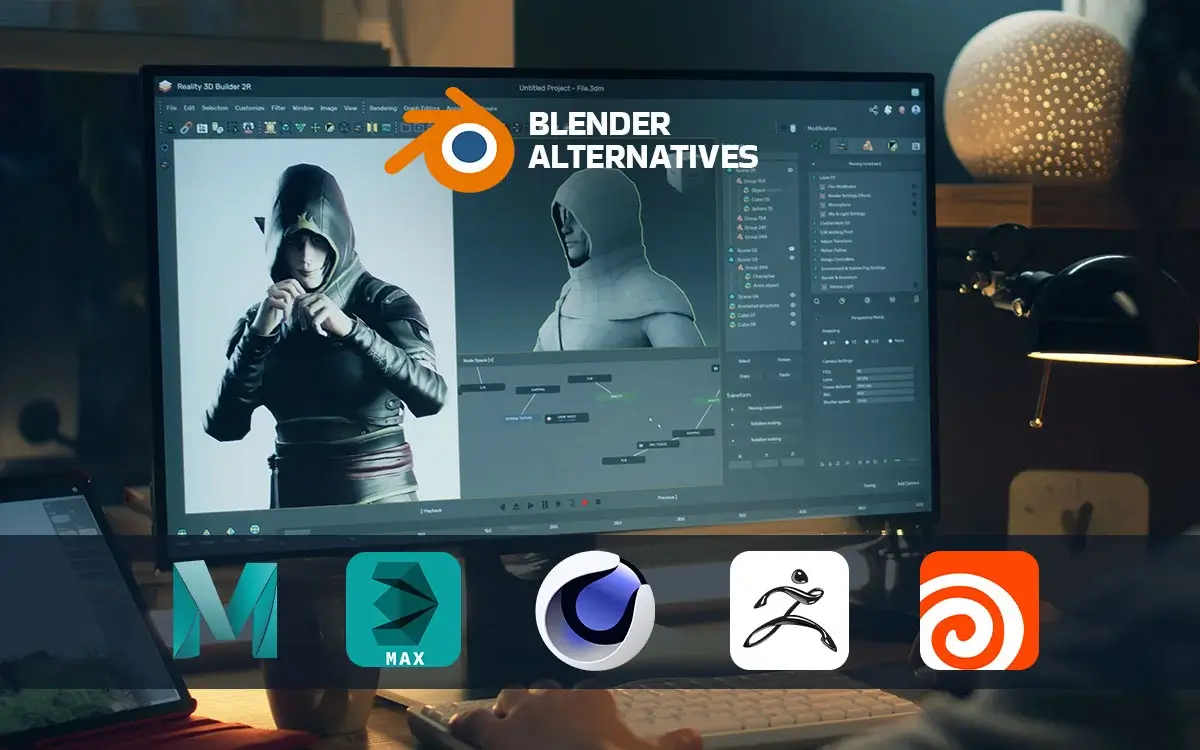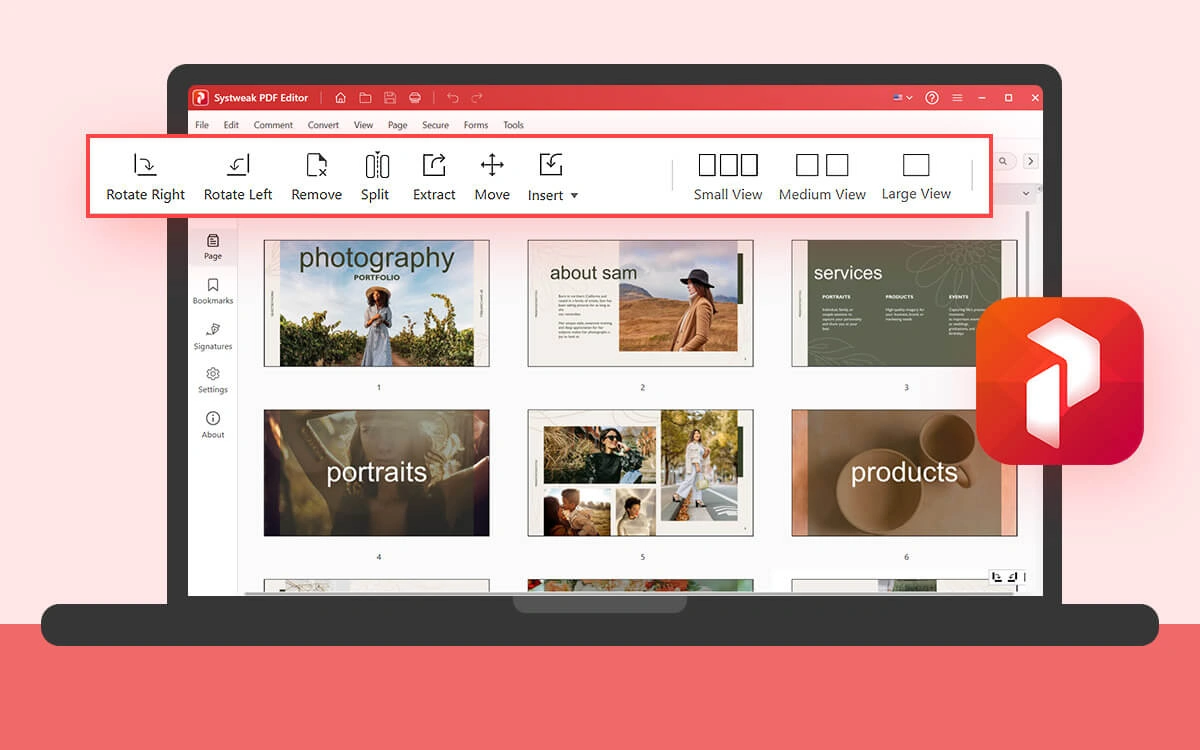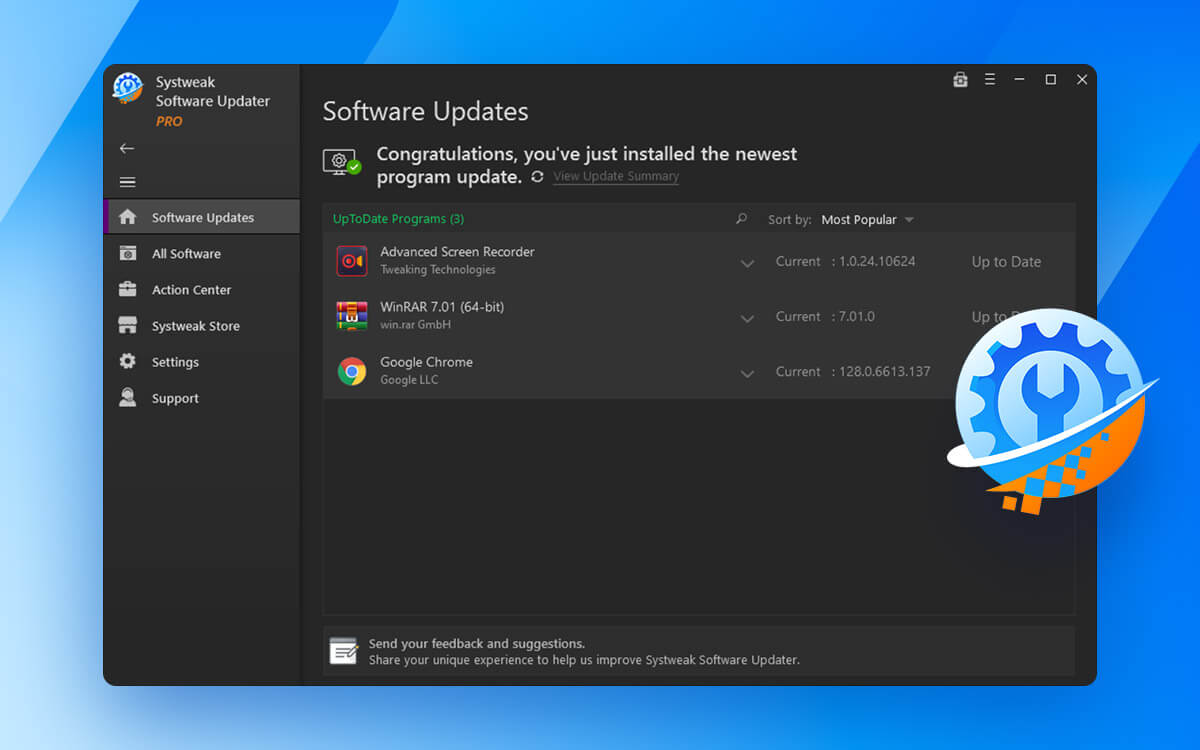Have you been a fan of using Blender, but your next project demands something else? If you are planning to switch to another software, we have made the task easy for you with some of the best alternatives to Blender.Blender is a prominent 3D animation and modeling software. It is free and open source. This implies that regardless of whether you have just started creating 3D content or whether you are a professional 3D artist, Blender is a good choice. But, just like every other utility, Blender too, has its share of cons. Since it’s open source, bugs can crop up from time to time. Plus, many companies use Blender alternatives to fulfill their project requirements. For these reasons, you might want to switch to alternatives to Blender. Here we have tried, tested, and enlisted some of the best software like Blender.
How To Choose A Blender Alternative?
Your choice of a Blender alternative would depend on your project needs. Yet, there are some factors that you can keep in mind when choosing a Blender alternative - - Learning Curve Blender has a very easy-to-use interface. So, if you are used to its workflow and are switching to another software, you might want to consider how easy the interface of the software you are going to work with next. - Hardware Requirements It is important that you first check the system requirement that a Blender alternative demands. Many Blender alternatives consume a lot of computer resources or require graphic cards of certain specifications. Before downloading one such software, make a note of the hardware the software demands. If need be, you may even have to upgrade your existing PC hardware. - Project Requirements Not saying that Blender doesn’t cater to the needs of professional projects, there are big-budget projects that require a lot of work to be delivered. It might be the case that Blender is not used as a part of their pipeline and they might as well use a Blender alternative which their workforce is more familiar with. So, before choosing software like Blender, it is advisable that you inquire about the software being used already in your project. - Pricing Most Blender alternatives offer a free trial after which you have to switch to a subscription-based model. It would be a wise move to first compare the pricing, and then select software with a price plan that fits your project needs and budget - File Format and Cross-Device Compatibility When choosing an alternative to Blender, check if the software offers file format and cross-device/ software compatibility. This means if there are no compatibility issues in terms of File Format, you could save your 3D project data i.e. textures, models, animation, rigging files, etc in multiple formats such as OBJ, FBX, and others and use the data on other devices and software. Plus, you can also import data from other software as well. Now you have some key points that you can consider when choosing a Blender alternative for your Windows PC. Let’s have a look at some industry-specific tools that you can use in place of Blender.Software Like Blender For Windows 11/10 PC For 3D Modeling
1. Autodesk Maya
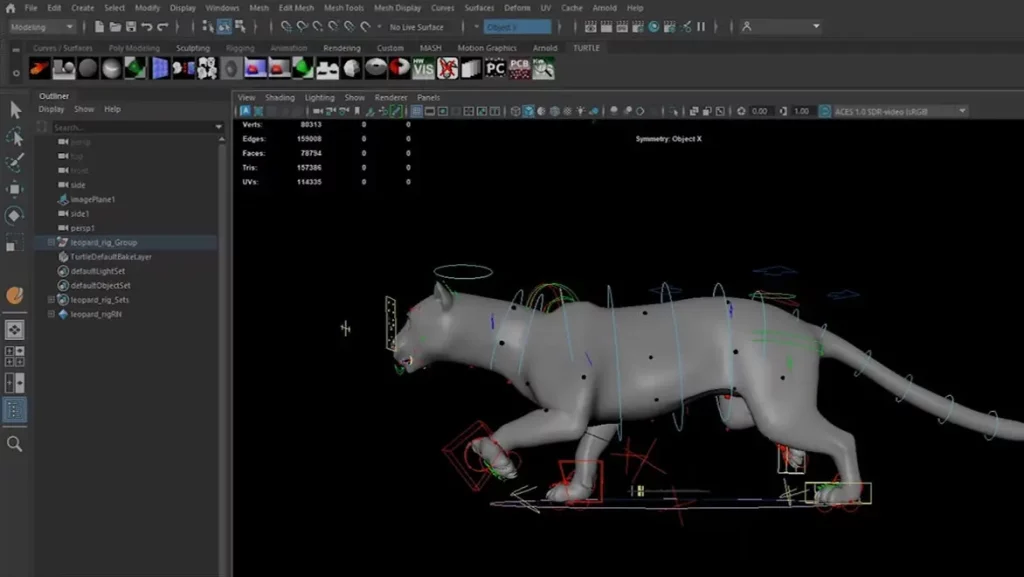 AutoDesk Maya is one of the best alternatives for Blender. Not only because it offers various 3D modeling features, but it also caters to all aspects of 3D animation - modeling, rigging, animation, and everything in between. It is widely used in the industrial landscape and is often a part of workflow when it comes to CGI in filmmaking.
Notable Features
AutoDesk Maya is one of the best alternatives for Blender. Not only because it offers various 3D modeling features, but it also caters to all aspects of 3D animation - modeling, rigging, animation, and everything in between. It is widely used in the industrial landscape and is often a part of workflow when it comes to CGI in filmmaking.
Notable Features
- Smart Extrude eliminates manual cleanup of model geometry.
- Vast sculpting tools to sculpt models intuitively.
- NURBS provides a 3D modeling framework based on drawn curves and geometric primitives.
- Polygonal modeling helps create models based on edges, faces, and vertices.
- View and edit UV texture coordinates for polygon.
- View real-time scene changes with Arnold rendering integration.
- Retopology tools let you create new topologies depending on the reference surface.
- Create animation using motion capture.
- Pose and animate characters with skeletons.
- Steep learning curve.
2. Maxon Cinema 4D
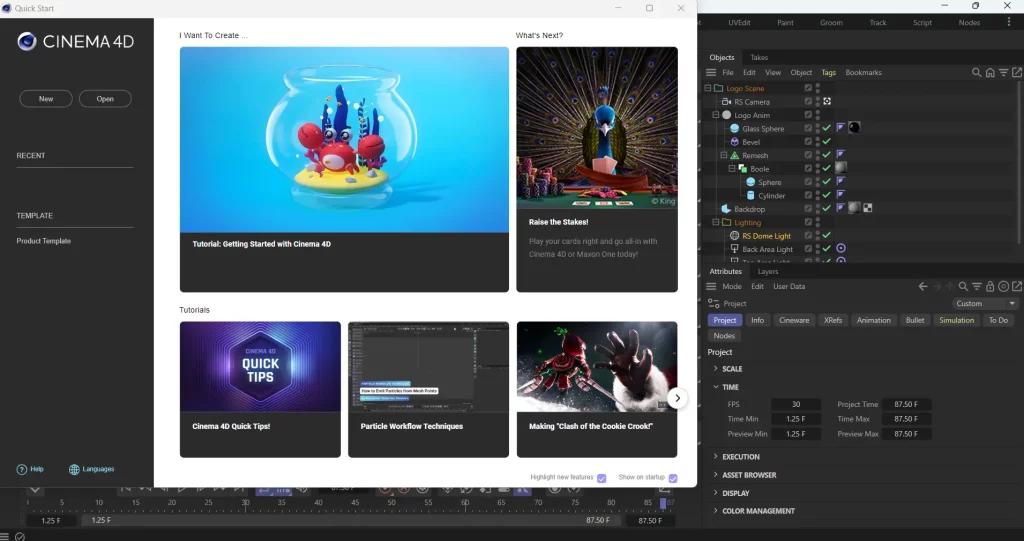 Cinema 4D is a software like Blender that offers better animation and simulation. Apart from that it is also better at rendering models and scenes. It can help you create near photo-realistic scenes. As for 3D modeling, Cinema 4D comes with a wide procedural and interactive toolset. If you are a beginner and want to learn the functionalities, you can take the aid of various tutorials.
Notable Features
Cinema 4D is a software like Blender that offers better animation and simulation. Apart from that it is also better at rendering models and scenes. It can help you create near photo-realistic scenes. As for 3D modeling, Cinema 4D comes with a wide procedural and interactive toolset. If you are a beginner and want to learn the functionalities, you can take the aid of various tutorials.
Notable Features
- A variety of interactive and procedural modeling tools.
- ZRemesher helps transform the topology of any mesh automatically.
- You can model with Symmetry and mirror changes on the model.
- Vector support makes it easy to work with SVG artwork and Illustrator.
- Projection Deformer helps move points in any direction from one object to another.
- Modern particle system.
- Asset browser features easy-to-find and use models and other assets.
- Highly multi-threaded realistic-looking simulations.
- Inbuilt render farm.
- Sometimes you may have to rely on external plugins for certain tasks.
3. ZBrush
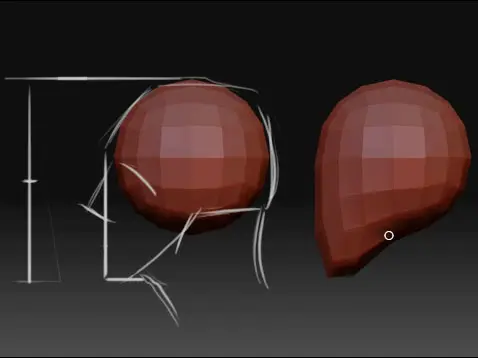 ZBrush is an industry-standard when it comes to sculpting. It replicates the experience of working with clay. Once you have sculpted your virtual 3D clay using various brushes and tools, you can texture and paint it to bring your creation to life. Just like Cinema 4D, ZBrush also gets Redshift CPU for high-quality rendering.
Notable Features
ZBrush is an industry-standard when it comes to sculpting. It replicates the experience of working with clay. Once you have sculpted your virtual 3D clay using various brushes and tools, you can texture and paint it to bring your creation to life. Just like Cinema 4D, ZBrush also gets Redshift CPU for high-quality rendering.
Notable Features
- 3D layers for non-linear workflow.
- 30 startup brushes and the ability to create an endless assortment of custom brushes.
- Lazy Mouse 2.0 helps guide stroke angle and length before applying the result to a surface.
- Apply various noise types regardless of polycount.
- Convert any shape or sculpture into a 2D alpha with a single click.
- Wide collection of 3D models and animation presets.
- Integration and compatibility with Adobe Products like Adobe Photoshop, Illustrator, and After Effects.
- Enhance animation using the f-curve.
- Industry-grade rendering.
- Lacks some functions like bevel, extrude, etc.
4. Autodesk 3ds Max
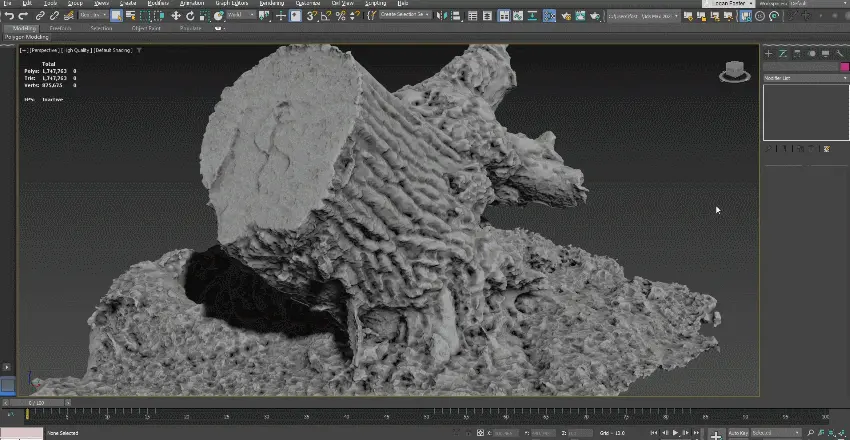 3ds Max caters to professionals who value efficiency and familiarity over anything else. As a Blender alternative, Autodesk 3ds Max offers a more streamlined workflow. Also if you are working on architectural visualization projects that also involve animation, learning, and using Autodesk 3ds Max is recommended. The same goes for modeling objects as well.
Notable Features
3ds Max caters to professionals who value efficiency and familiarity over anything else. As a Blender alternative, Autodesk 3ds Max offers a more streamlined workflow. Also if you are working on architectural visualization projects that also involve animation, learning, and using Autodesk 3ds Max is recommended. The same goes for modeling objects as well.
Notable Features
- Create accurate designs by automatically reconstructing poly mesh data into a quad-based topology.
- Non-destructive modifiers help conceptualize design ideas.
- Flexible extrude operations to extrude faces on 3D objects.
- Create angular or curved 3D shapes using various spline tools.
- Create organic and parametric objects.
- Built-in modifiers can be great for beginner modelers.
- Comes with a V-Ray plugin with which you can render architectural models in high definition.
- Material Editor lets you create materials and maps in scenes.
- Cross-integration with other Autodesk products.
- Certain processes are not multi-threaded.
5. SideFX Houdini
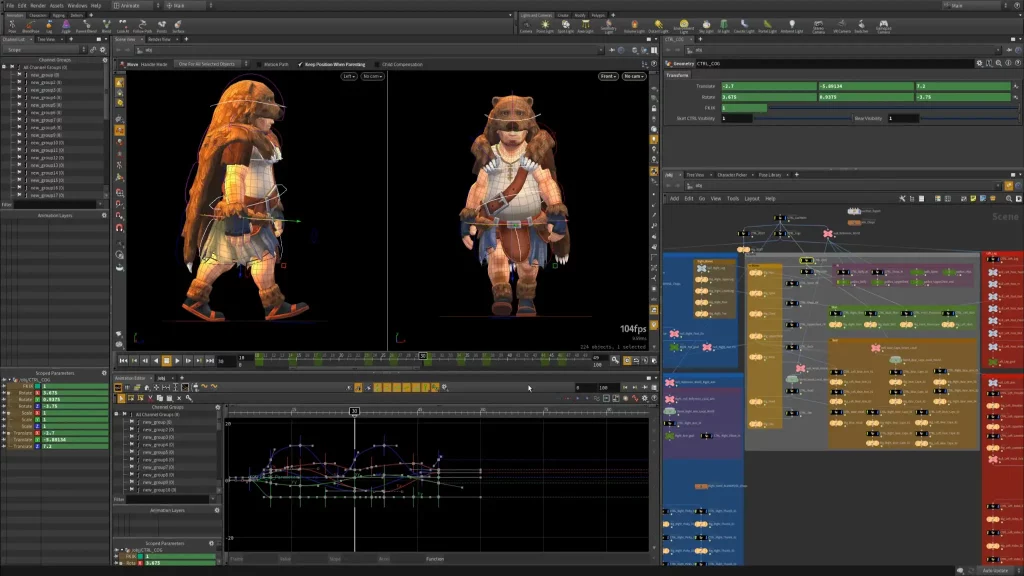 Houdini is a node-based software like Blender. It is a perfect tool to work with particles as well as dynamics. As a part of the workflow, Houdini incorporates procedural modeling as well as a node-based approach. While Blender lets you work with parametric forms with ease, it gets slower when dealing with complex geometries. Here, Houdini is efficient in handling complex geometries.
Notable Features
Houdini is a node-based software like Blender. It is a perfect tool to work with particles as well as dynamics. As a part of the workflow, Houdini incorporates procedural modeling as well as a node-based approach. While Blender lets you work with parametric forms with ease, it gets slower when dealing with complex geometries. Here, Houdini is efficient in handling complex geometries.
Notable Features
- Finite Element solver helps analyze stress on an object to bend or break it.
- Position-based dynamics; well suited for wet and dry sand.
- Vellum fast cloth and hair come with effects such as grains, hair, and soft bodies.
- Procedural modeling helps maintain a robust construction history.
- USD-based scene graphs for best rendering.
- Node-based workflow helps handle complex scenes and make non-destructive edits.
- Flexible plugin system.
- Manipulate animation imported from external sources.
- Combine and layer different effects.
- Consumes more RAM as compared to Blender.
6. Modo
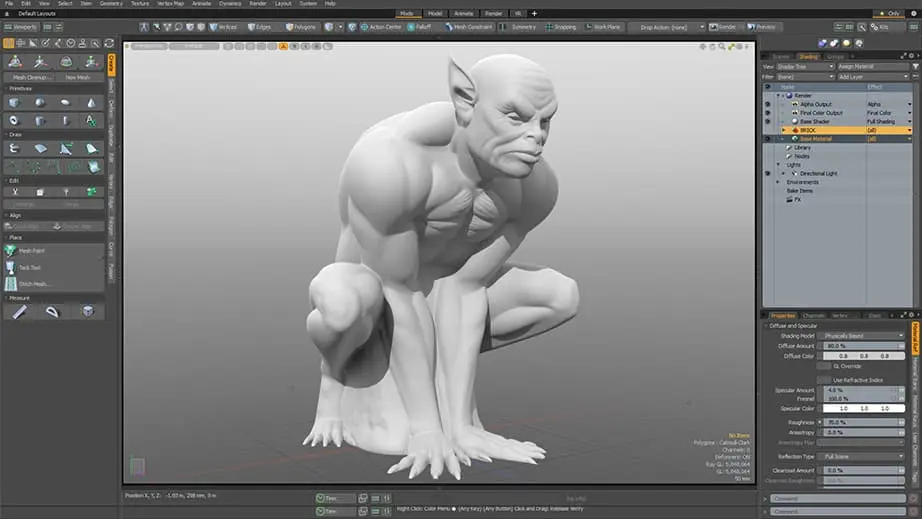 When it comes to 3D modeling, Modo is one of the best alternatives to Blender. It is used by artists for creating real-time content in VR and games, product designs, or for that matter, bringing any concept to life. It offers fast direct modeling, comes with MeshFusion Boolean toolset, offers flexible procedural modeling, and has built-in sculpting tools.
Notable Features
When it comes to 3D modeling, Modo is one of the best alternatives to Blender. It is used by artists for creating real-time content in VR and games, product designs, or for that matter, bringing any concept to life. It offers fast direct modeling, comes with MeshFusion Boolean toolset, offers flexible procedural modeling, and has built-in sculpting tools.
Notable Features
- Procedural as well as direct modeling features.
- Brush-based sculpting tools for fine-tuning objects.
- 3 renderers and multiple shading options.
- With Toolpipe you can create infinite tool variants.
- Build a large number of assets that you can reuse.
- Extensive file format support, and asset sharing for efficient collaboration.
- Flexible layer-based and nodal shading.
- Lacks sculpting and texturing tools.
7. SketchUp
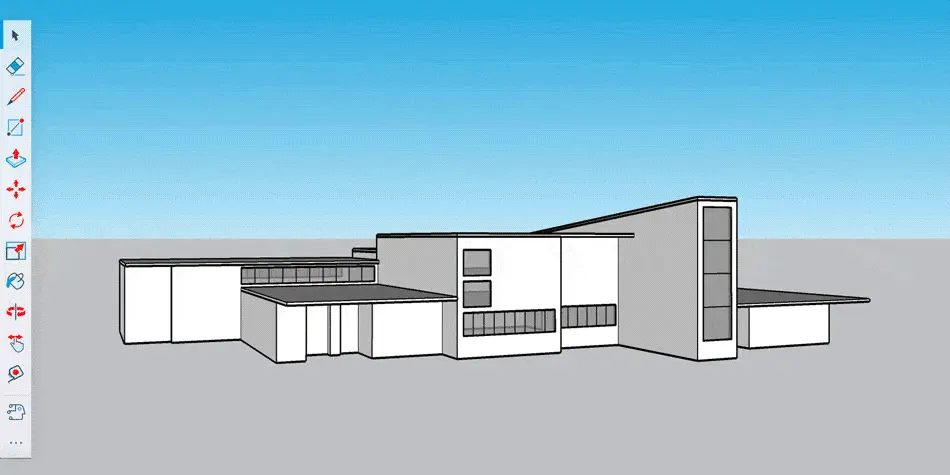 SketchUp is a utility like Blender but it caters to the needs of architects, civil engineers, and interior designers. It can also be used in designing engineering systems and props in game development as well. If you are using SketchUp alongside Blender, then you can import SketchUp files (SKP) in Blender for more powerful rendering.
Notable Features
SketchUp is a utility like Blender but it caters to the needs of architects, civil engineers, and interior designers. It can also be used in designing engineering systems and props in game development as well. If you are using SketchUp alongside Blender, then you can import SketchUp files (SKP) in Blender for more powerful rendering.
Notable Features
- Vast online repository of 3D models available for free.
- Ambient occlusion highlights space and relations with other objects.
- Import models from various sources.
- Layout Draft Mode helps in dimensioning and annotating complex sets of drawings.
- Scenes feature is great for architectural presentations.
- Enhance models using various rendering plugins.
- Cross-integration with other CAD software.
- Performance issues when working with large models.
8. Tinkercad
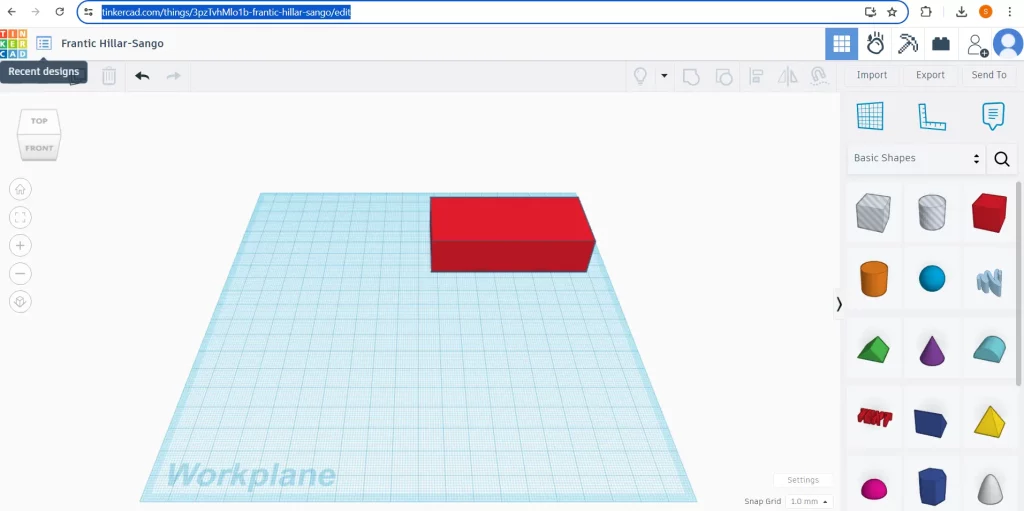 Tinkercad is a Blender-like utility with which you can make prototypes and test new ideas before building them. It was acquired by Autodesk, the makers of Maya and 3ds Max, in 2013. It is a browser-based application, which means you won’t have to install a standalone software and you can start working directly on the web.
Notable Features
Tinkercad is a Blender-like utility with which you can make prototypes and test new ideas before building them. It was acquired by Autodesk, the makers of Maya and 3ds Max, in 2013. It is a browser-based application, which means you won’t have to install a standalone software and you can start working directly on the web.
Notable Features
- Add pre-existing shapes or import your own.
- Create custom shapes to create intricate and detailed models.
- Rotate the workplace to change views or adjust shapes.
- Create exact copies of shapes and duplicates, and repeat the same changes to each instance.
- Apart from modeling you can simulate circuits and code.
- Align multiple objects along any axis.
- Create Minecraft and Lego models.
- Can’t convert 3D objects to 2D planes.
9. Blockbench
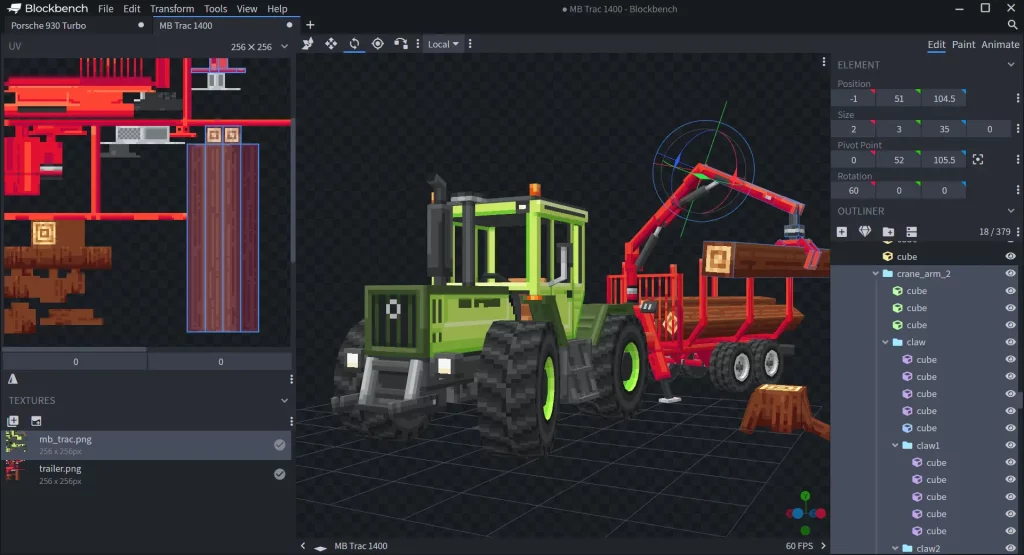 Blockbench is a low-poly 3D model editor. It makes the process of creating low-poly models easy. Here you can use cuboids to model objects. Or, you can create complex low-poly shapes. Quite like the other modeling software, Blockbench also offers a variety of texturing and animation tools. It also has an extensive plugin store with which you can enhance your models.
Notable Features
Blockbench is a low-poly 3D model editor. It makes the process of creating low-poly models easy. Here you can use cuboids to model objects. Or, you can create complex low-poly shapes. Quite like the other modeling software, Blockbench also offers a variety of texturing and animation tools. It also has an extensive plugin store with which you can enhance your models.
Notable Features
- Create models with custom meshes or cubes.
- Export models in dae (Collada), .obj, FBX, or .glTF format.
- Supports UV editing.
- Upload models to Sketchfab.
- Export models and animation in Minecraft.
- Functionality to render models on Blender.
- Create models in a matter of minutes.
- Not favorable for high-poly models.
10. FreeCAD
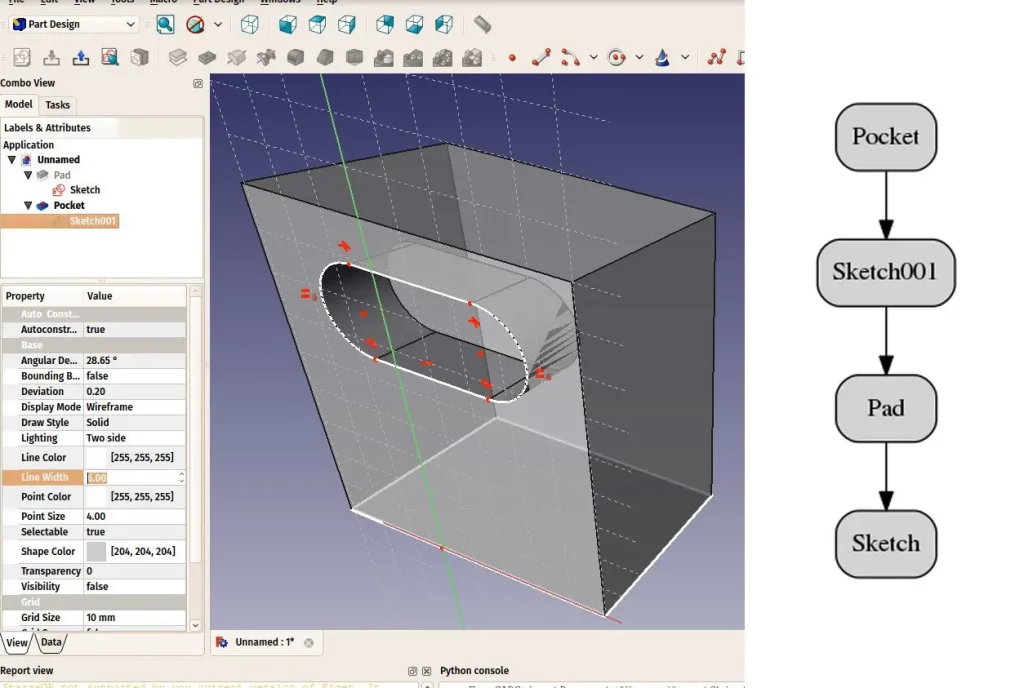 FreeCAD is a free and open-source software that works like Blender. It lets you create 2D shapes and then, on the basis of these you can build 3D objects. The utility uses real-world units which implies that you can adjust dimensions and extract design details to create precise models based on the requirements of your project.
Notable Features
FreeCAD is a free and open-source software that works like Blender. It lets you create 2D shapes and then, on the basis of these you can build 3D objects. The utility uses real-world units which implies that you can adjust dimensions and extract design details to create precise models based on the requirements of your project.
Notable Features
- Tools to edit and export solid models based on real-world units.
- Import and export different file formats such as OBJ, STEP, STL, SVG, DXF, etc.
- Dedicated workbenches for various purposes such as modeling, 3D printing, 2D CAD drafting, etc
- Sketcher helps in sketching geometry-constrained 2D shapes.
- All shape changes are recalculated by an undo/ redo stack.
- Support for all kinds of objects in modeling such as solids, boundary representations, NURBS, and others.
- Easy to code parametric objects.
- Lacks advanced modeling features.
